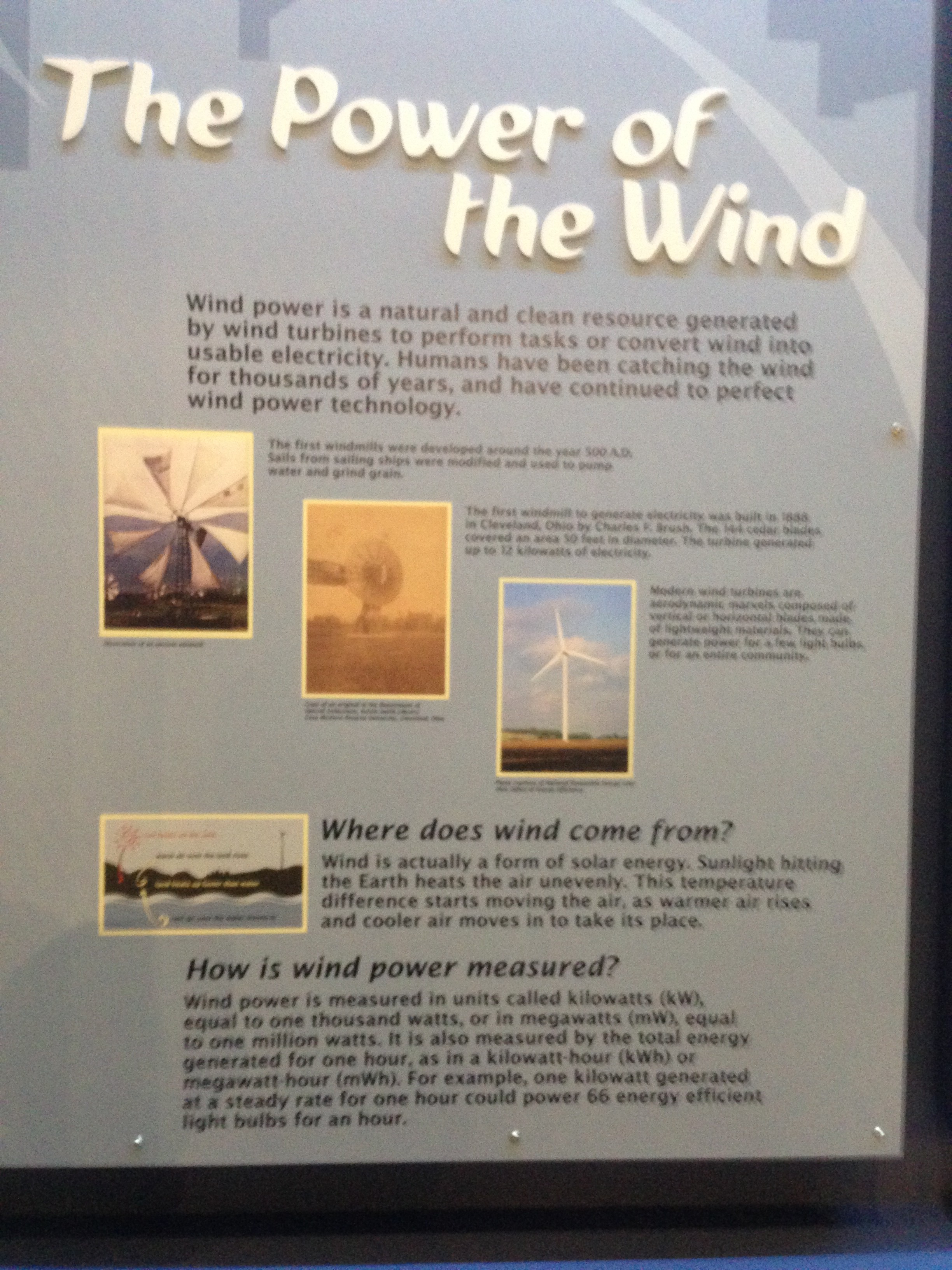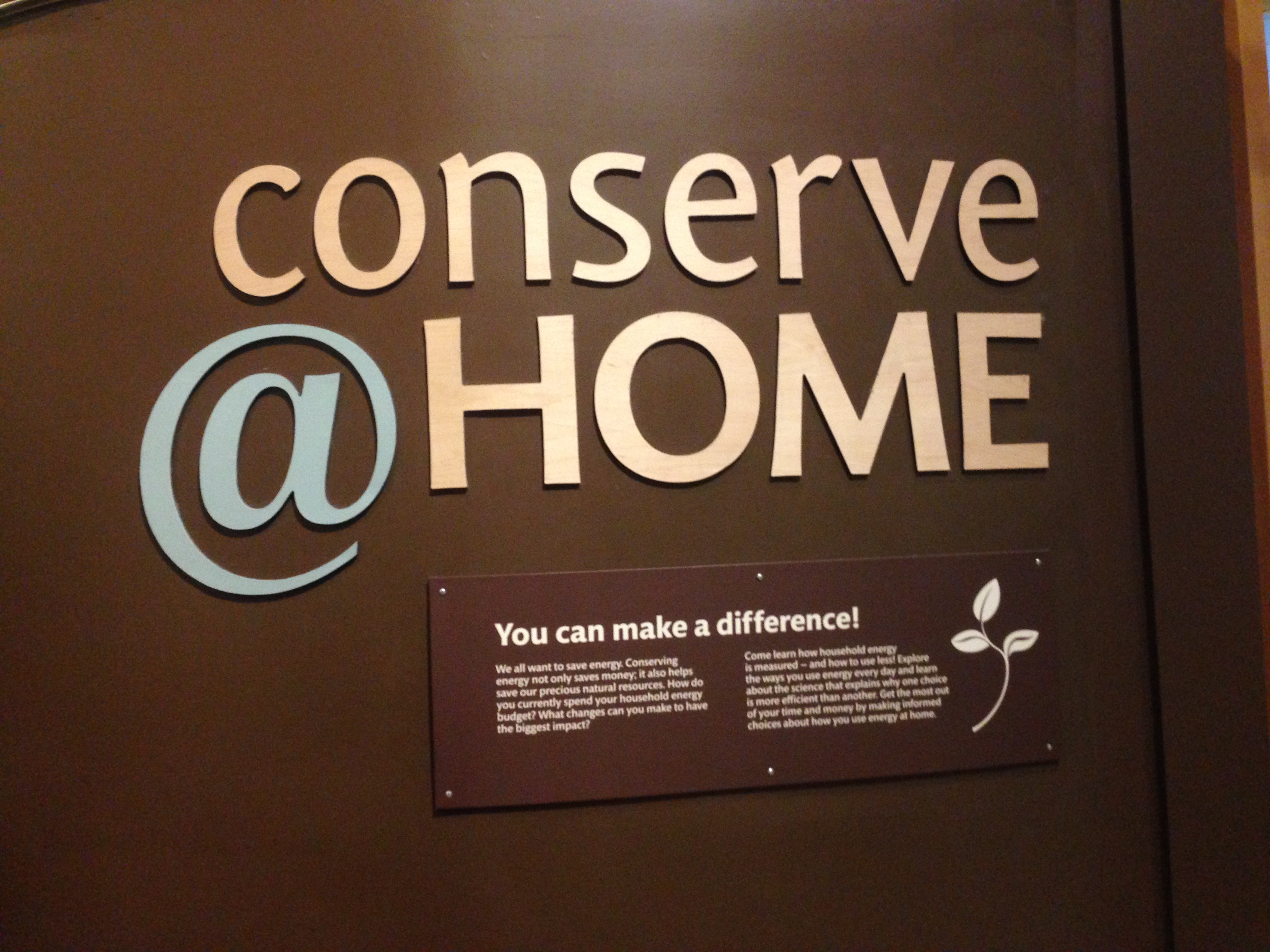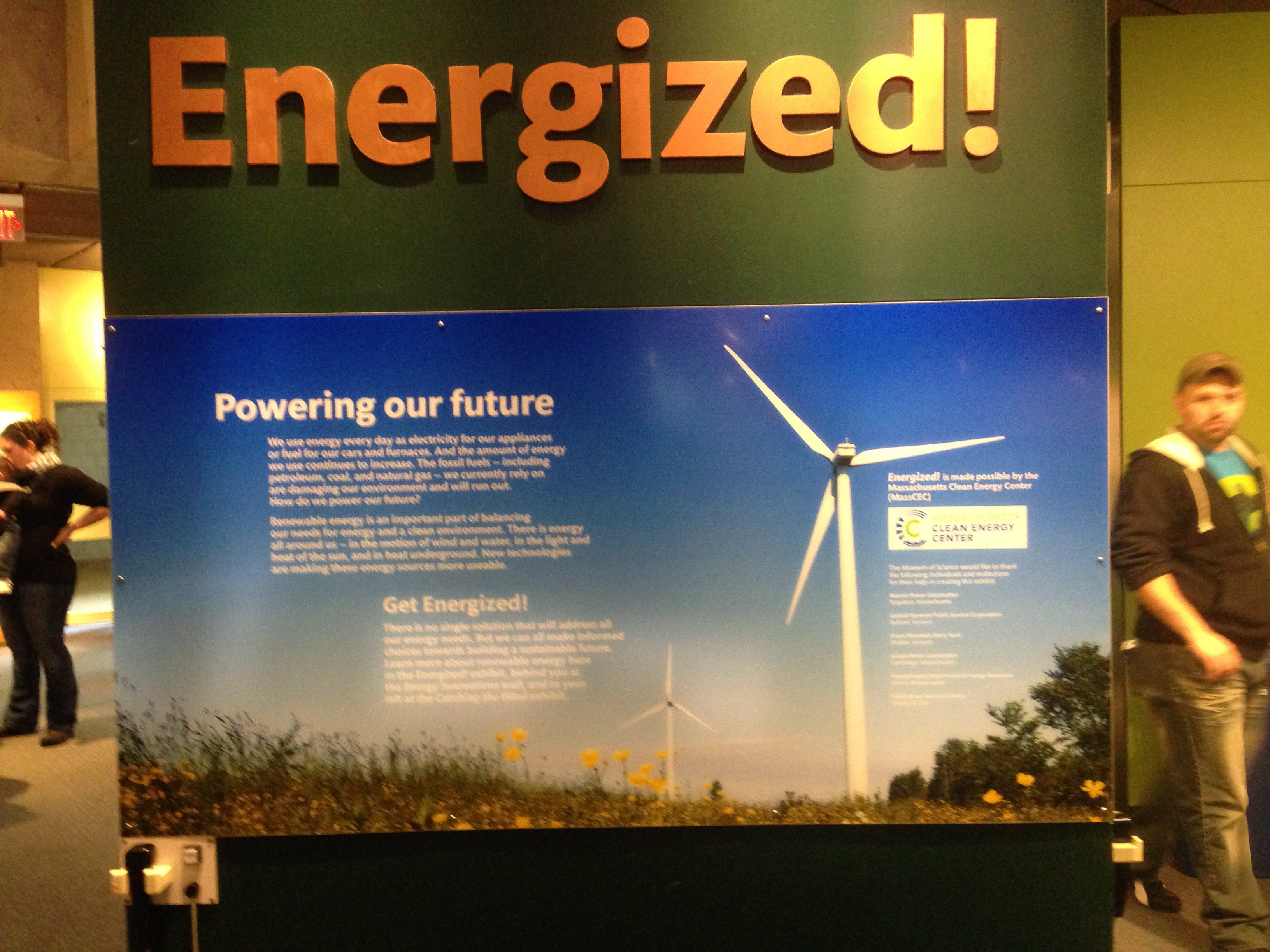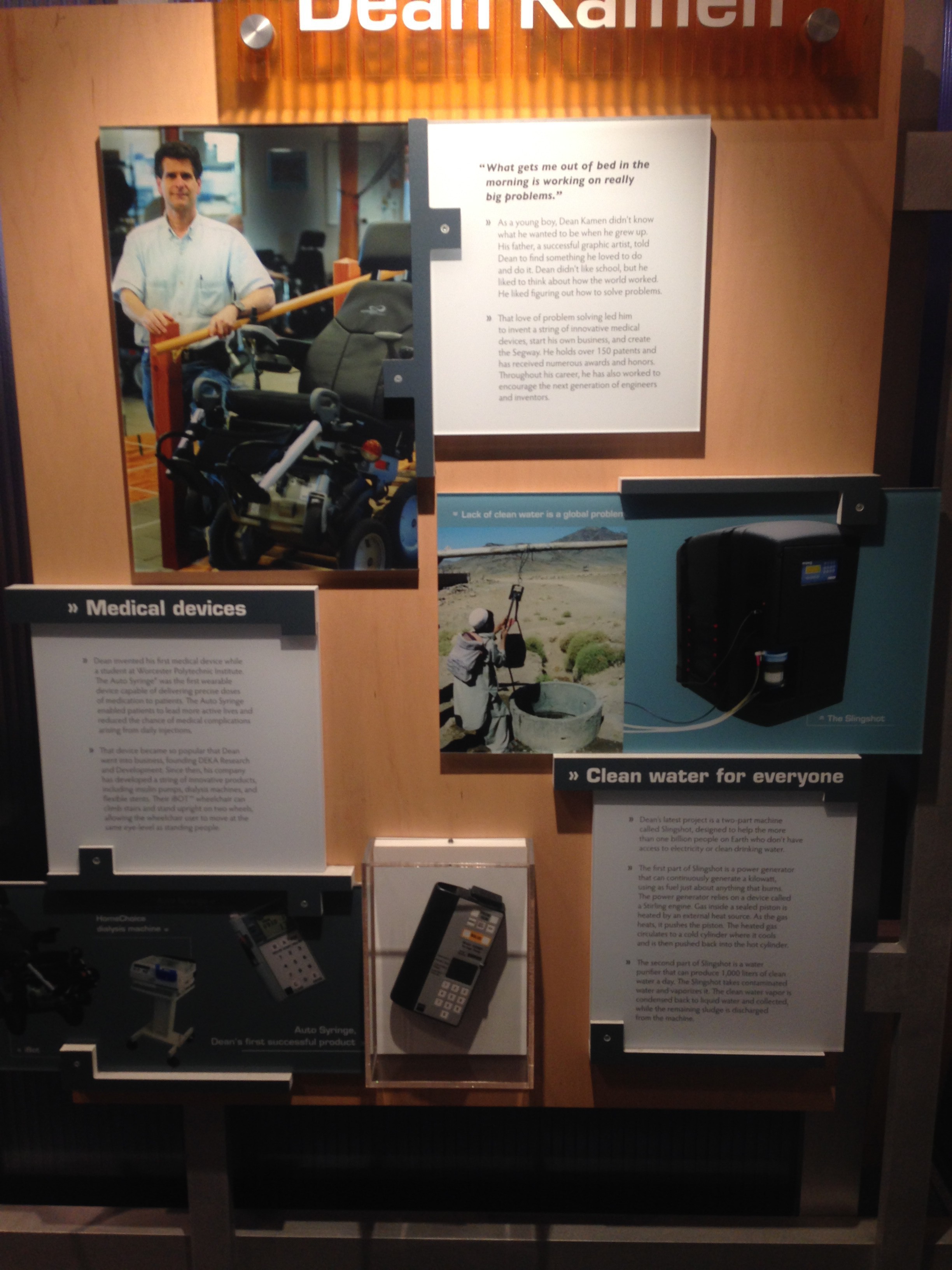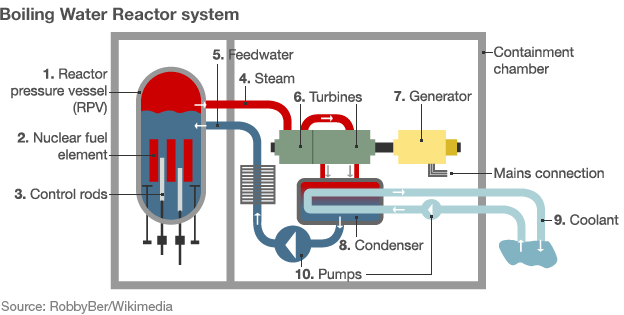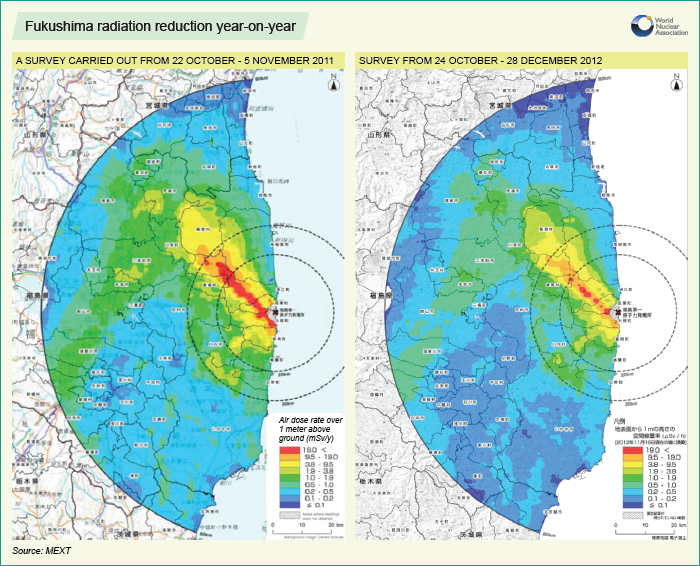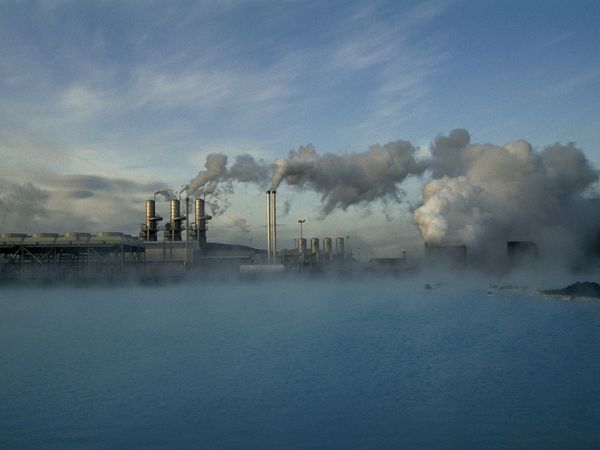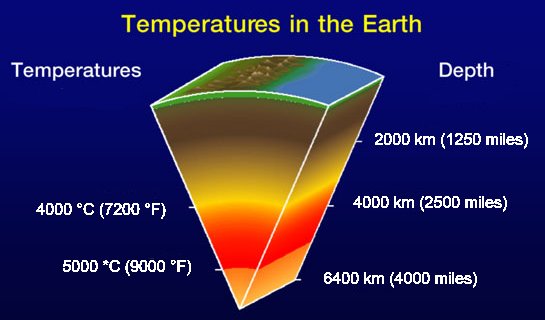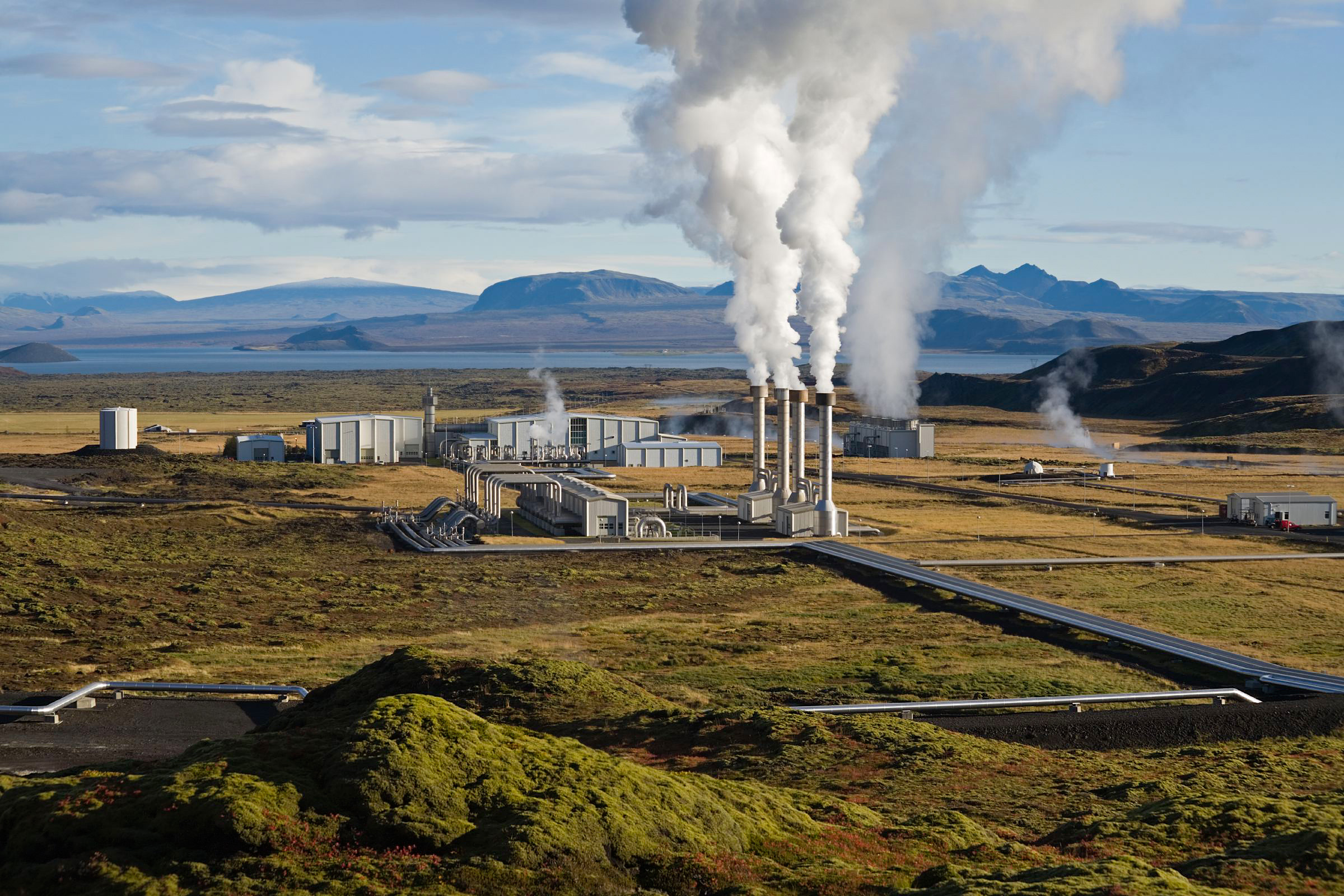Museum of Science
Intro
Hello classmates, I would like to begin my blog by thanking Professor Sonek for taking class time to allow us to visit the museum of science. Although I was raised in Boston, I had not been to the museum of science since childhood. It was a great time and extremely interesting. My blog will continue to follow the following outline. I will begin by describing what I learned and my overall experience in the following four exhibits: Catching the Wind, Conserve @ Home, Energized and Innovation engineers. I will then finish by stating my opinion on the overall museum field trip.
Catching the wind
The exhibit explained how turbines transform wind into green energy. It was extremely interesting to track energy production in the museums own energy lab. In the picture below you can see the turbines on the roof of the museum. The exhibit actually allowed us to track the museums wind energy production.
Interactive games allowed me to learn about the decision making involved in deciding where to place a turbine, and what type of turbine should we use. The exhibit also provided great explanations on how electricity is generated. The game “Wind Power Challenge”, allowed me to visualize and decide how I would power my community, business, or home.
Conserve @ Home
“You can make a difference!” That quote summarizes what the exhibit was actually about. The entire exhibit was a display that expressed how everyone could save energy and make a difference in the environment.
The exhibit presents data on how we can save money while saving our natural resources. It gave us examples on how to make the greatest savings in our households. The “What’s a Watt?” display was interesting because it showed which appliances use more energy than others.
One of the images displayed in the exhibit really stood out in my opinion. It stated “Reduce Reuse Recycle”.
Each one had a meaning:
Reduce the amount of waste you generate
Reuse materials by finding another use for them
Recycle all you can from what is left
The three RRR’s are a hierarchy that describes how we can go about decreasing the overall waste.
Energized
Energized is an exhibit that concentrates on sunlight, wind, water in motion, and other forms of energy. The exhibit was filled with videos and hand-on activities. The exhibit displayed rooftop-like solar panels that displayed how a solar panel could power a house.
The introduction or beginning of the exhibit was extremely interesting; it began by defining what role energy plays in our everyday activities. It then continued by describing what we currently depend on for energy. Resources such as oil, gas, and coal resource that eventually will run out. The exhibit then continues by explaining the necessity of developing alternative forms of energy
“Renewable energy is an important part of balancing our needs for energy and a clean environment. There is energy all around us – in the motion of the wind and water, in the light and heat of the sun, and in heat underground. New technologies are making these energy sources more useable”.
Innovative Engineers
“Innovative Engineers” was my favorite exhibit out of the 4 exhibits required to visit by Professor Sonek. The exhibit not only displayed amaizing products created by engineers, but it also added emotion and personal goals to the display. We had the opportunity to read quotes that displayed what engineers are thinking, what drives them to continue and develop new products.
The display showed products designed by engineers and the purpose of the product.
For example, a product that I found to be fascinating was a robot designed by iRobot that was used by our soldiers to “detect, and dispose of bombs, perform reconnaissance, and carry out high risk tasks that people might otherwise have to do”.
This robot is essentially saving human lives. Imagine the satisfaction an engineer receives in knowing his invention has saved the lives of American soldiers.
Conclusion
Overall I enjoy the fieldtrip, I spent a significant amount of time enjoying the exhibits. It was great to tie in our learning’s in class with the works of engineers and scientist who are really trying to overcome modern day challenges.
